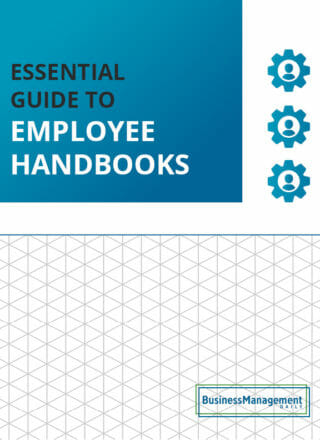12 common mistakes employers make in performance reviews
Common performance review mistakes
How much attention should a manager give to employee performance reviews? Before completing your next batch, consider the following scenarios:
-
Kate is a superstar employee. She regularly posts the highest monthly sales total, and her positive attitude makes her popular with colleagues. Her performance reviews, though, seem only to mention areas where she could improve. She is likewise frustrated that management never seems to bring up her career path. Her LinkedIn connections keep telling her she should consider looking for a new employer, showing more appreciation.
-
Bria weighs down the staff with her poor performance. At the departmental head’s request, human resources looks at her file. It is missing her mid-year review, which her direct manager meant to get to but didn’t. The last review on record shows middle-of-the-road marks and a comment that her work “could be better.” However, it lacks specifics about what she does wrong or how to improve. HR concludes that there is a lack of evidence and due process. It does not want to risk the employee claiming unfair termination.
-
Daniel notices his co-worker Cindy is upset after performance reviews are passed out. She tells him how she got all fours and fives on ratings, but the comments section says she lacks professionalism. She wants to ask her manager what that means, but she does not get the feeling he invites discussion. Daniel laughs, saying nobody cares about these evaluations and that she should save time if she scores high enough for the annual raise.
Effective performance reviews serve many purposes. They show how well a worker meets job expectations, pinpoint specific actions and areas of excellence, and highlight areas needing improvement.
As a result, they can act as motivators, serve as a paper trail, and, finally, be a springboard for discussions about the present and future.
Through thought and thoroughness, managers can maximize the worth of performance appraisals and avoid situations like those mentioned above. Here are 12 of the most common mistakes employers make in the performance review process.
Failing to create a performance review template
Managers should not “wing” performance appraisals. Companies benefit from developing a standardized form and using it for every individual. It ensures coverage and consistency. It keeps a leader on track to address all important aspects of employee performance, not just factors that readily come to mind.
Spaces for details such as the date, the manager’s signature, and the employee’s acknowledgment of receipt reduce the chances of such things being overlooked.
Likewise, using the same metrics for everyone promotes a sense of fairness. The company reduces employee charges of favoritism or discrimination based on gender, race, age, or another category.
If a wrongful termination case should occur, this paperwork could prove vital for the company in its efforts to show it evaluates everyone using the same criteria.
Creating a template also assists the organization in pinpointing what it values and how each employee measures up. Human resources personnel can review past performance reviews, and managers from other departments can also review them.
These reviews give managers a good idea of a worker’s competencies and weaknesses. This information proves helpful in determining salary increases, promotions, and transfers within the company.
Putting performance evaluations at the bottom of the to-do list
Managers sometimes put off filling out performance reviews because they prefer avoiding doing them or viewing other tasks as more critical of attention. If you want your direct reports to take them seriously, evaluations must be done promptly.
If a scheduled performance review before the new year finally shows up in March, it will look like an afterthought. In the meantime, employee performance issues that could be on the path to improvement still need to be addressed.
Being guilty of recency bias
Ever seen a child behave especially well in the weeks leading up to Christmas with the hope that Santa will forget the bad behavior earlier in the year? Team members do that, too, during the annual performance review season.
Be sure your evaluation covers the entire time frame stated, not just what you can recall from recent job performance. Jot notes to yourself throughout the appraisal period, and refer back to them to eliminate recency bias from potentially skewing your perception.
Lacking meaning in ratings
One of the biggest mistakes managers make is jumping into the review system without thinking first about the standards for the ratings they give. What is the difference between “excellent,”’ “very good,” “satisfactory,” and “needs improvement”? If using numbers, what distinguishes giving someone a three instead of a four?

Avoid the temptation to take the easy way out and give all employees a middle-of-the-road score or a “satisfactory.” Such an action discourages high performers because they fail to get the recognition they deserve. Meanwhile, low performers walk away with a higher opinion of themselves than they should.
Remember, these reviews are often used as the basis of promotions and other company actions, so they need to present an accurate picture.
To that end, also be sure your ratings stay consistent. If Susan and Nancy perform a task at the same level, both should receive the same score. A three for Susan should not be a four for Nancy.
Creating discrepancies between ratings and words
Another performance review mistake occurs when managers do not watch for agreement between assessment ratings and the statements they compose. Performance reviews often contain both numbers and words. Together, they offer information on how the individual meets expectations. However, readers need clarification if written feedback and scores do not support each other.
Say Jared receives comments saying that he is a wonderful team player who always lends a hand to colleagues in need — but his “teamwork” score is only a three out of five. Is he outstanding in this area or just adequate?
Trying to “put things gently”
Undoubtedly, managers should strive for respectful communication with their direct reports. Professionalism, however, does not translate to sugar-coating negative feedback to avoid hurting someone’s feelings.
Such a strategy risks the other person failing to understand that there is a problem and that you are serious about solving it. Without clearly noticing the issues, you cannot expect someone to change his actions. Value clarity.
Favoring feelings over facts
People form perceptions of those they work with, and managers are no exception. However, a leader filling out a performance review must put personal feelings aside and act as an impartial judge. Yes, John might be a jerk, and you should mark him down in categories such as attitude or ability to get along with others if he displays poor behavior.
Suppose he is also a highly competent computer programmer who always does on-time, flawless work, the scores and comments on the appraisal need to accurately reflect that in the appropriate sections.
Likewise, don’t inflate the work performance of an employee with whom you get along well but who also has trouble delivering projects on time.
Overstepping your boundaries
Evaluators rate how well someone meets the expectations of the job she holds. They should not analyze personality traits or play armchair psychologists. Stick to what you observe. That fact should appear in the performance review if Jackie is frequently tardy. What you don’t need to do is speculate on why she is late.
Maybe the rumor of her staying out late partying several nights a week is true — or maybe she just lets people think that because the real reason is depression makes it hard for her to get out of bed in the morning.
Either way, the reason is her own personal business. Mentioning anything other than her failure to report on time can come off as “judgy” and an invasion of privacy.
Neglecting to mention positives
Managers certainly want appraised employees to walk away knowing what to improve upon going forward. However, spotlighting problems while ignoring strengths can send a wrong message.
You risk appearing to pick on someone or to be impossible to please. You also miss a key opportunity to boost morale, as people crave praise.
Tell employees exactly what they are doing right so that they can keep repeating those desirable actions.
Lacking vision
A common mistake managers and employees alike make is treating performance reviews as a formality to justify an annual pay increase. While this aspect is important, such a narrow focus deprives both sides of an opportunity to evaluate the future.
In addition to addressing current performance, seize the chance to look ahead. Where does this employee want to be down the line? How might you improve employee engagement? Goal-setting and formulating action plans contribute to employee development, benefiting the company and the individual.
Handing out a written review without a discussion
Rather than stuffing performance appraisals in employee mailboxes, set up face-to-face review meetings. These meetings offer a chance to expand on points, field questions about negative feedback, and ensure understanding.
Holding a discussion promotes engagement. The process feels less one-sided. Plus, hearing employee feedback may provide you with new perspectives. Offering verbal praise during this time reinforces appreciation for the good things an employee does for the company.
Ignoring follow-up
Before filing away the performance review, note any terms settled upon. If you promise expanded career development opportunities, figure out where, when, and how the company will provide them. If your performance management plan calls for monthly check-ins with an underachiever, schedule the meetings into your calendar.
Failure to follow up leads to the impression that your review system is simply bureaucratic nonsense. Getting employees to take performance appraisals seriously starts with you!
More resources:
Performance reviews to empower employees and your business ![]()
7 tips for more effective written performance reviews ![]()
Navigating a toxic work environment: Strategies for survival ![]()






